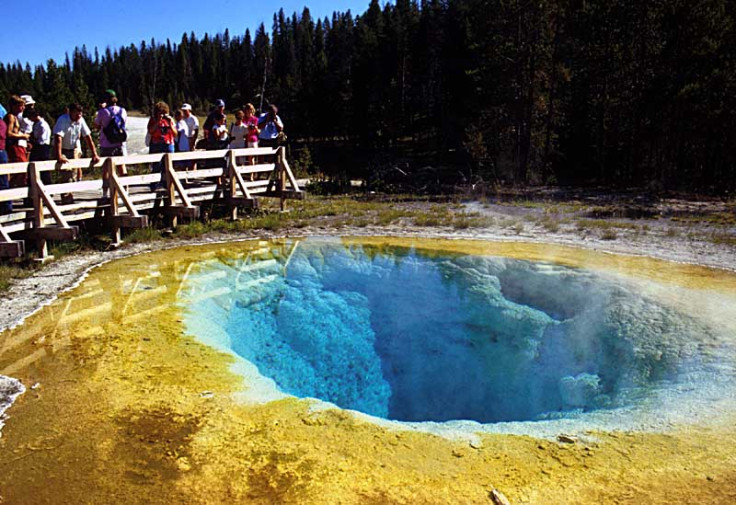Yellowstone becomes Greenstone: Tourism blamed for famous hot spring's dramatic colour change

Tourism has been blamed for the change in colour at Yellowstone National Park's famous "Morning Glory" geyser which has seen the once crystal-blue water turn yellowy-green.
Tourists from all over the world flock to the "Morning Glory" hot spring to witness the incredible colours. However, far from being a natural phenomenon, the transformation of the famous geyser has taken place due to the tourist practise of throwing "lucky" coins and other debris into the pool.
This accumulation of coins, rocks and other debris has clogged up the circulation, reducing the geyser's temperature - which allows orange bacteria to creep towards the centre of the pool. The changes, which have taken place since the 1950s, have led to the pool now being dubbed "Fading Glory".
"Morning Glory was once a deep blue, like the flower it's named after," science writer Adam Hoffman wrote in Science Friday.

"Over the years, however, tourists have tossed lucky coins, rocks, and other debris into the pool, partially blocking the underground heat source and lowering the temperature of the spring to a range habitable by photosynthetic microorganisms that probably didn't live there before."
In the 1940s some one million people per year visited Yellowstone, but now an estimated three million visit annually and this had had an impact not only on Morning Glory but on the park as a whole.
A report published in "Yellowstone Science" in 2009 concluded that the construction of roads, buildings and other man-made structures also impacted on the "health" of geysers and hot springs.
Yellowstone, which is mainly in Wyoming but also extends into neighbouring States Montana and Idaho, was established in 1872 and is thought to be the first national park in the world. It sits atop a supervolcano which experts fear could lead to the end of civilisation if it ever erupts.
© Copyright IBTimes 2025. All rights reserved.






















